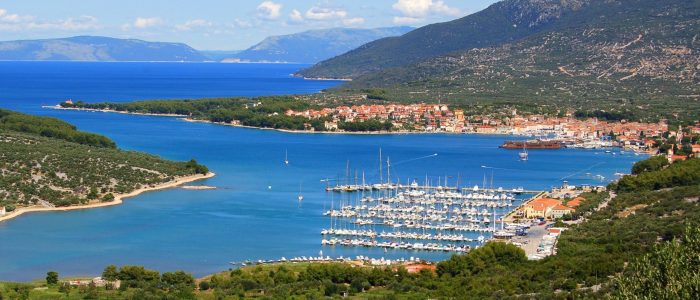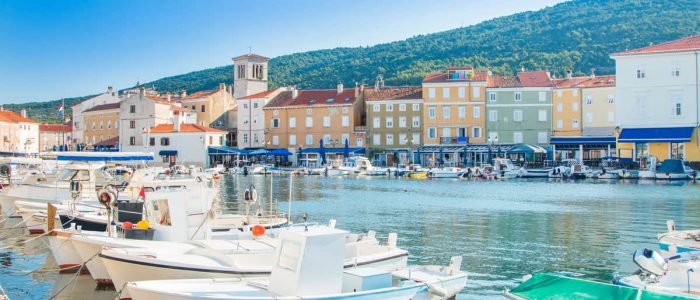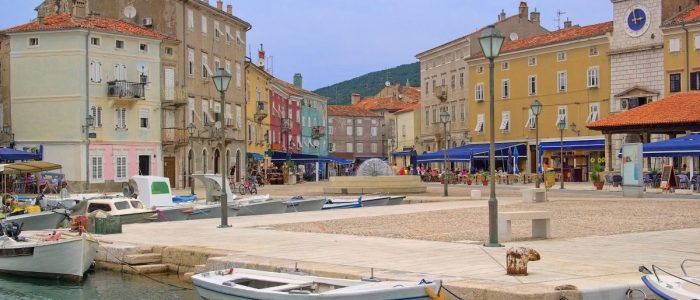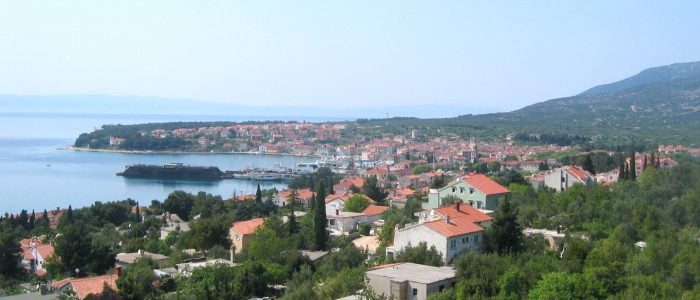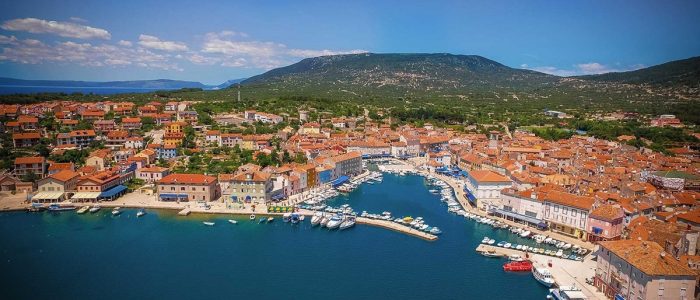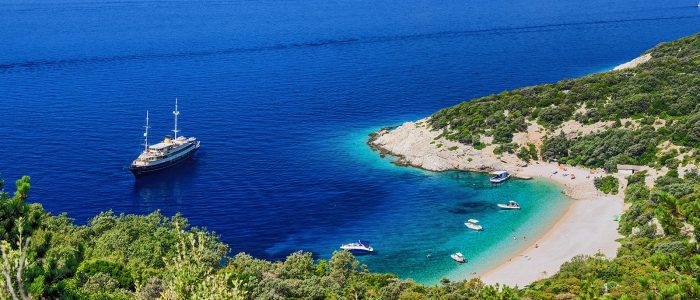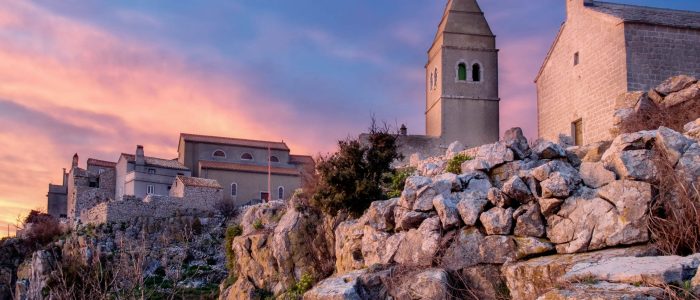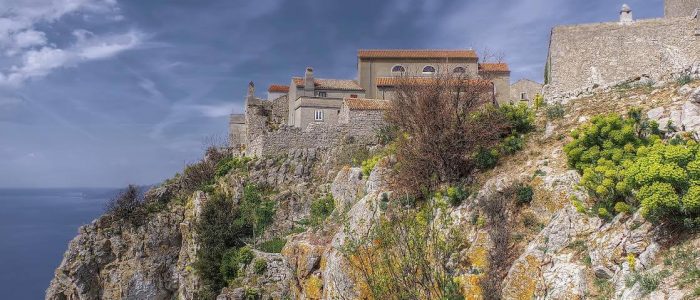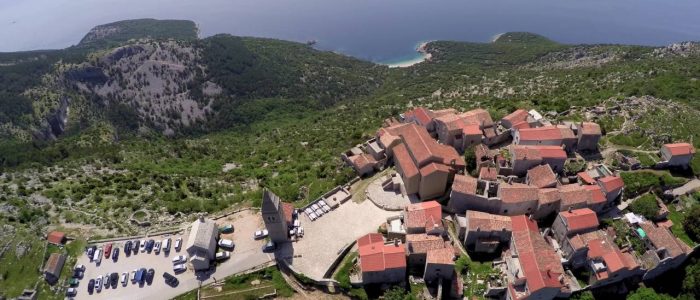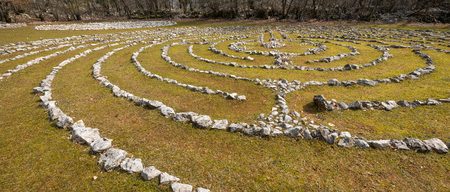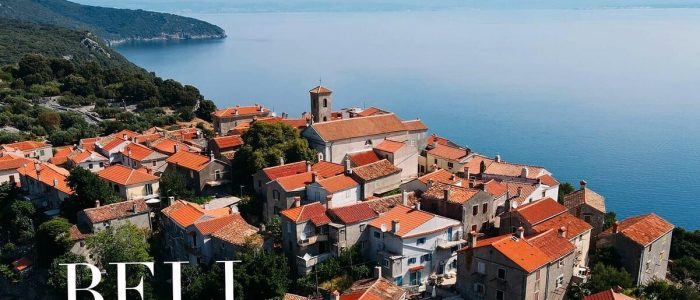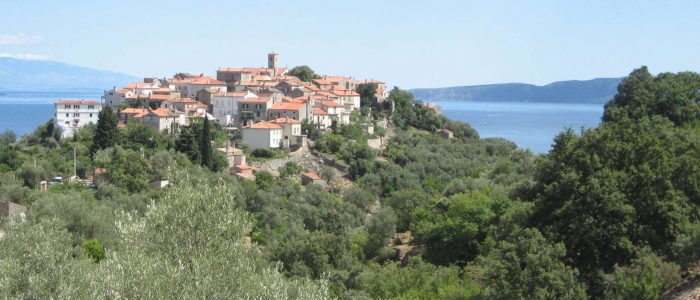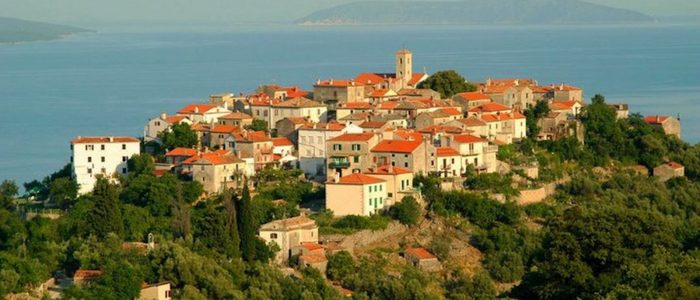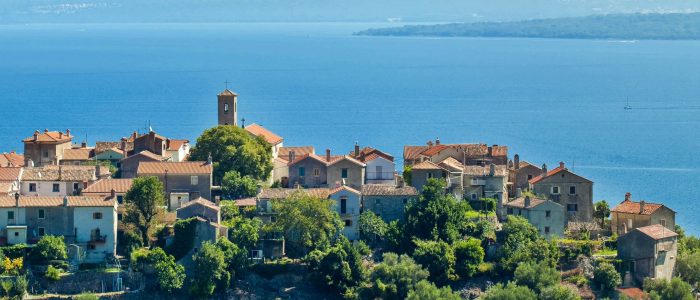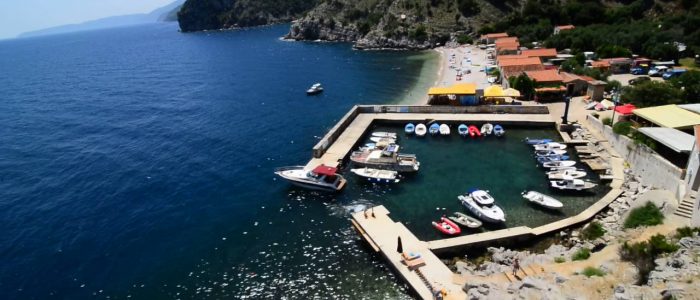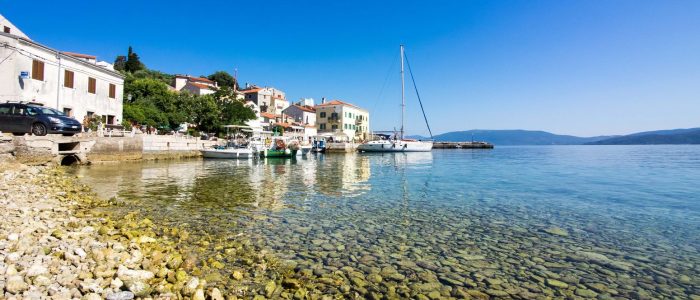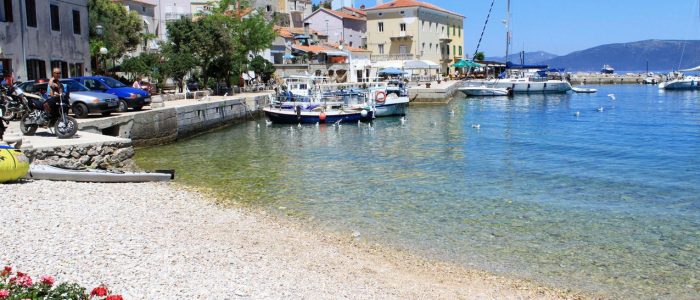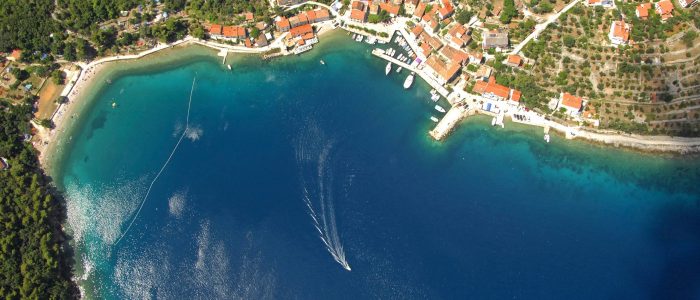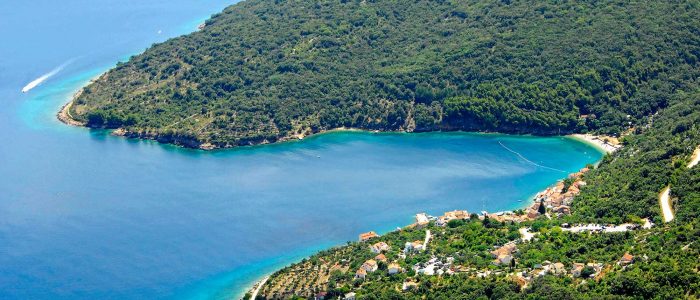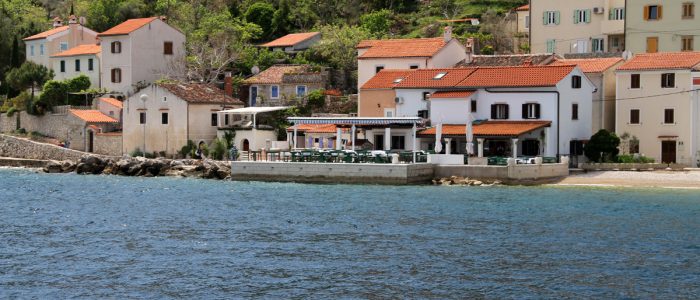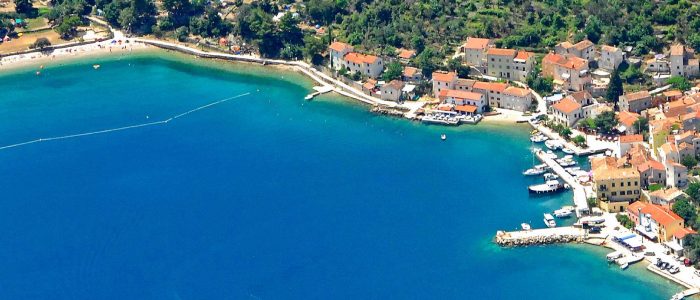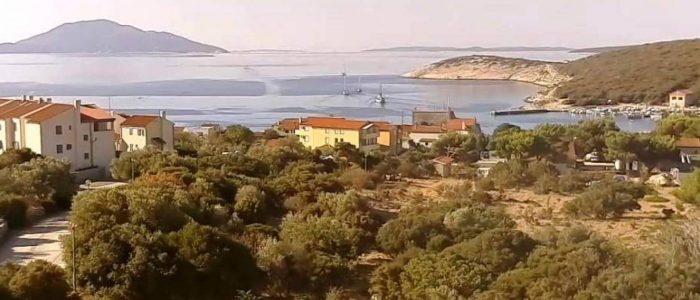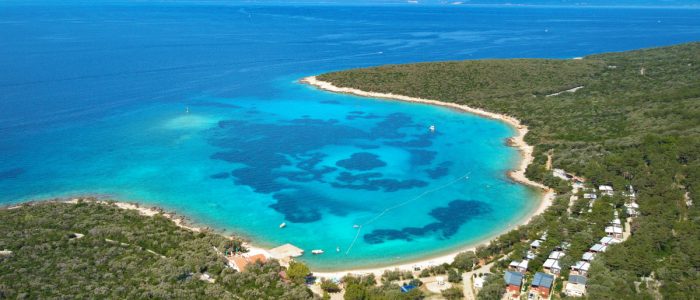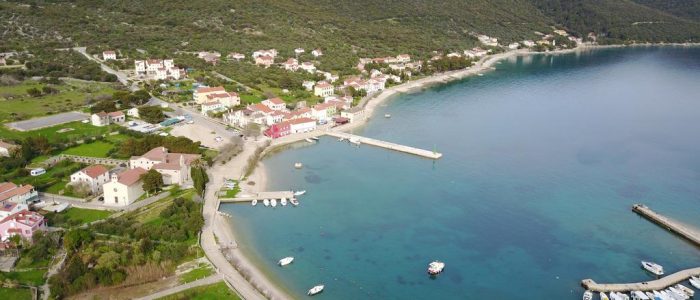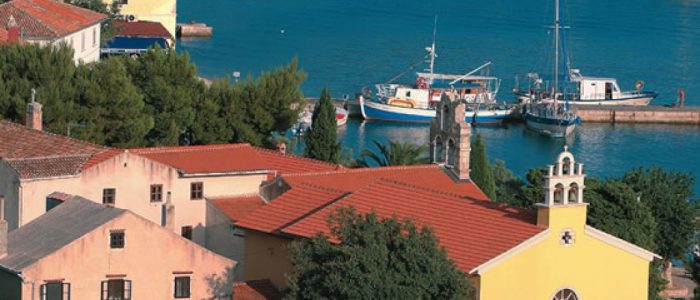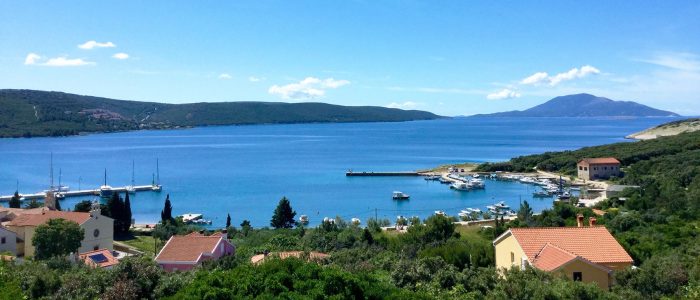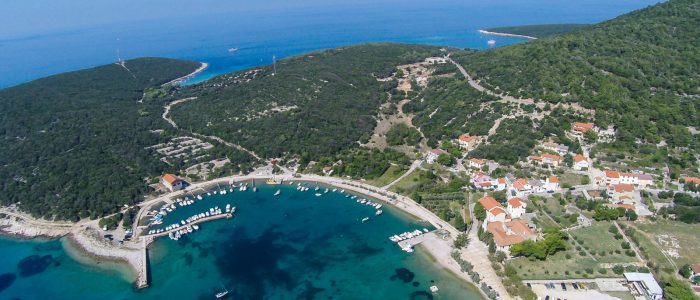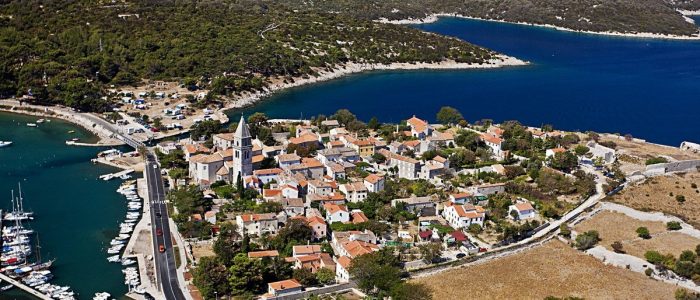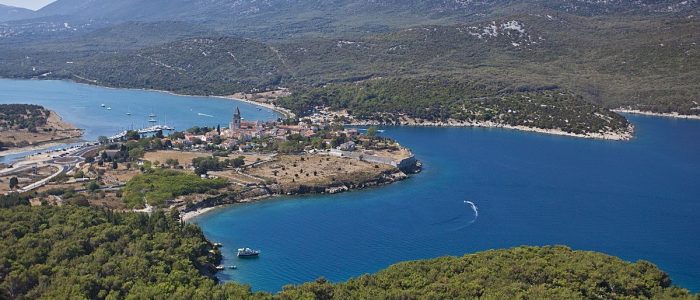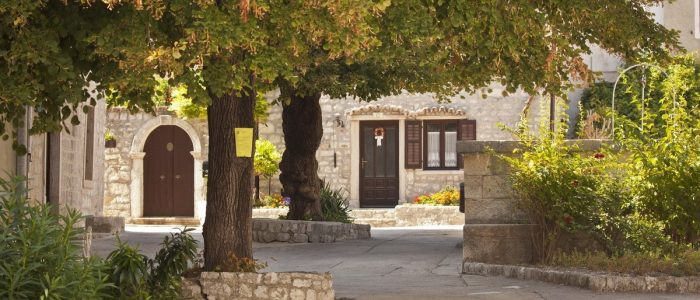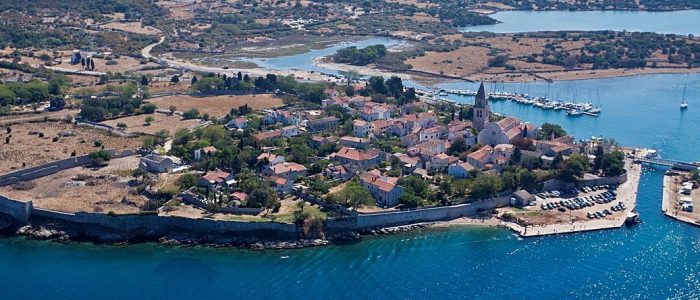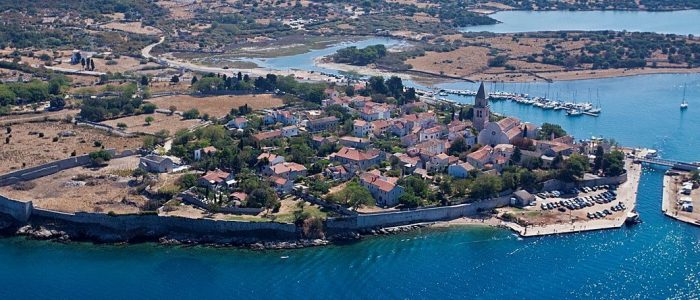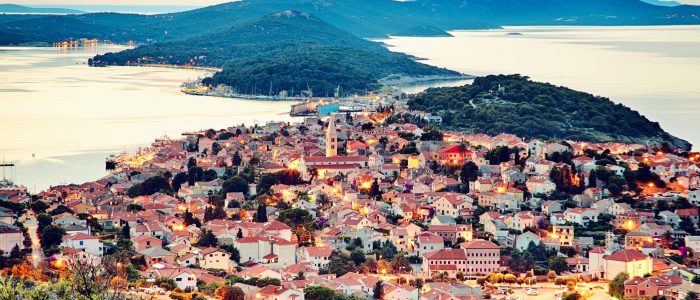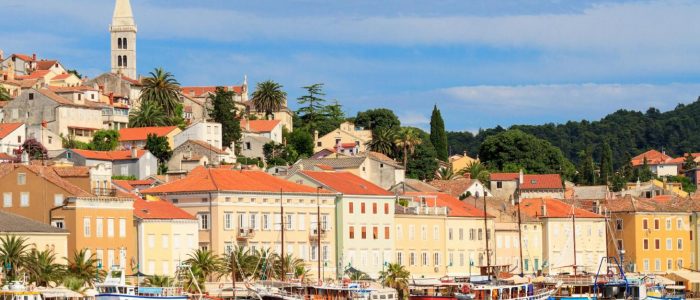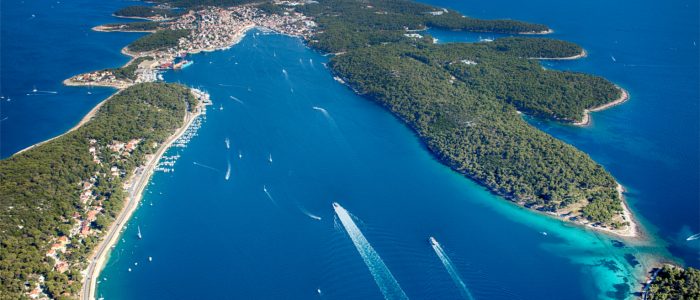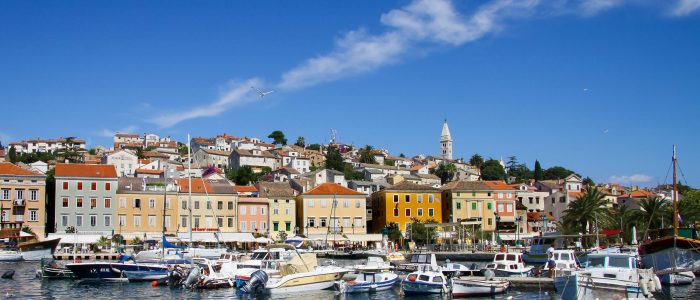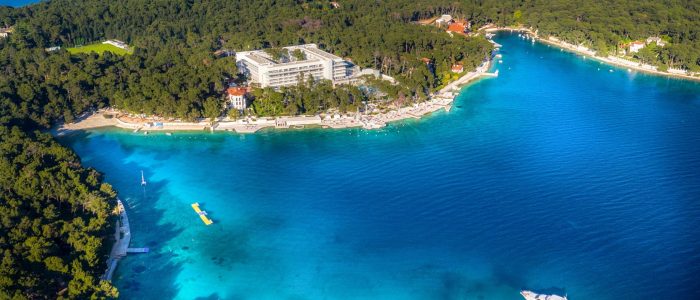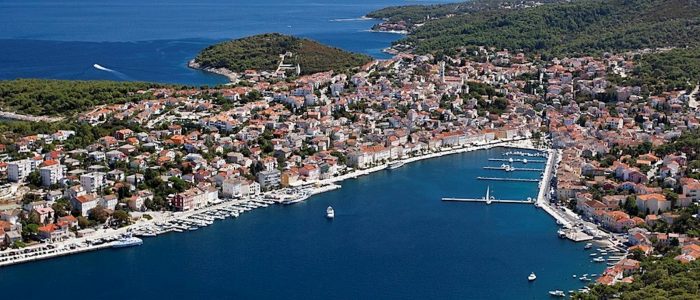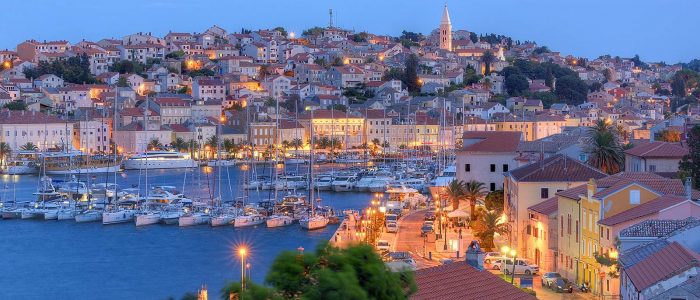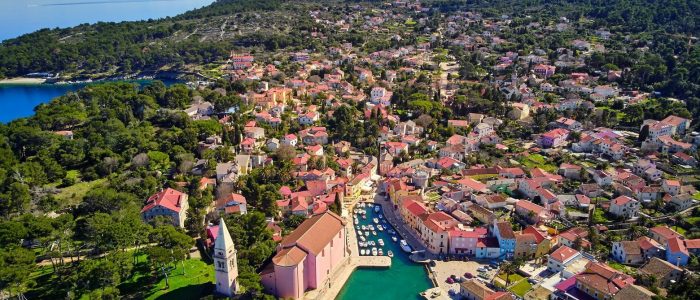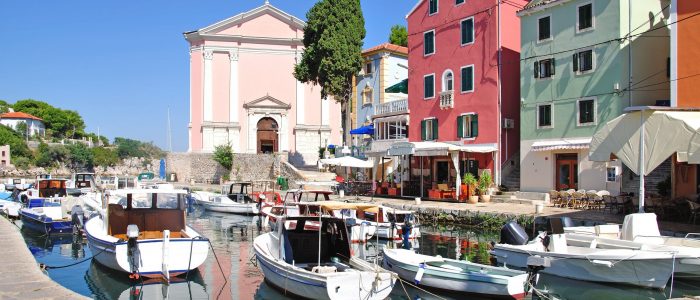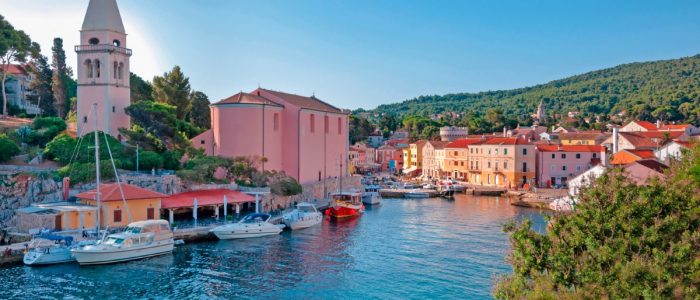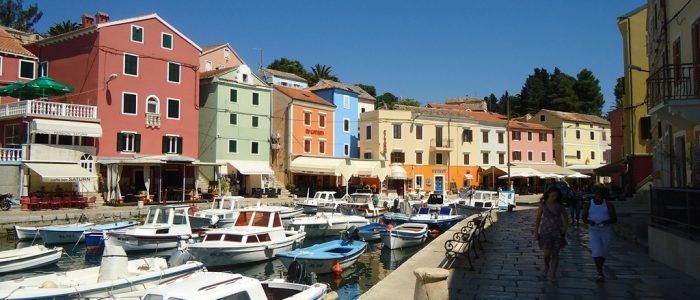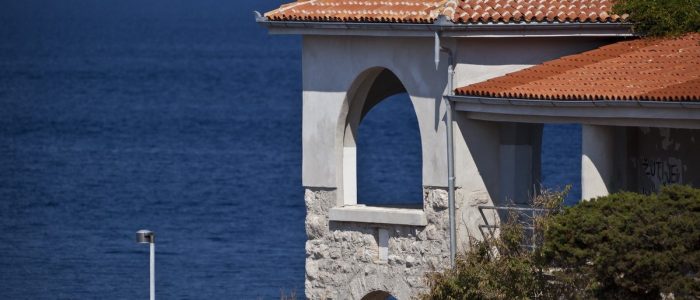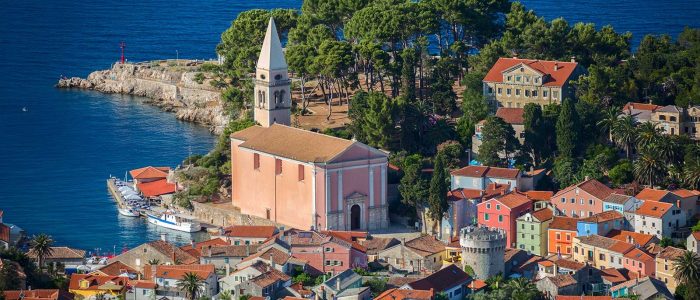Cres
On the island of Cres apart from the city of Cres there are many other villages some of which are located at the very coastline while the other are situated in the higher parts of the inland.
Coastal villages swarm with charming little bays, secluded beaches and the clean sea. A huge number of walking tracks, footpaths and hiking trails leading up to the out-of-the-way bays surround small villages located at the very coastline.
Lubenice
Lubenice is a small village on the island of Cres located at the top of a cliff 378 meters above the sea. In the Middle Ages Lubenice was one of the centres of archipelago due to its geostrategic significance.
In Lubenice there are medieval fortress and remnants of the medieval city wall and city gate. Besides the old square there are also many chapels in Lubenice: St Sunday Chapel, the Gothic chapel of St. Anthony the Hermit, the Parish Church of the Blessed Virgin Mary with a bell-tower from the 18th Century and St. Jacob Chapel. Lubenice has an oval shape through which two parallel winding streets run from the north to the south. Streets in Lubenice have no names and house numbers range only from one to forty two. There is a school in Lubenice; however, as no person younger than 65 lives here, there is no need for school.
Beli
Beli is one of the oldest and was one of the most important villages on the island in the past.
Beli is an acropolis type of village located on 130-meter high hill in the north of Cres where previously a prehistoric hill-fort stood. It is a typical coastal close-built village. There are many cultural and historic landmarks in Beli some of which are: parish church with a semi-circular apse, previously a Romanesque church in which there are several valuable Glagolitic inscriptions, a Romanesque church St Mary with a museum collection, a Gothic one-nave chapel St Anthony in the local cemetery, prehistoric stables in front of the entrance to the village and a Roman bridge over the canyon and a stone head of King Abel.
As a tourist spot Beli is aimed at family and camping tourism with a nice pebble beach and a well-protected harbour. Beli is also a favourite starting point for long walks in the beautiful woods of Tramuntana.
“Eco centre Beli” is located in Beli; within Eco centre there is the Interpretation Center with several permanent displays related to biological diversity of the Cres and Mali Lošinj Archipelago, to the stories of Eurasian griffon under the title “Do you want reality or a myth?” and to history and environmental heritage of the Tramuntana woods. The centre is also in charge for integral protection of Eurasian griffons.
Valun
Valun is a small picturesque fishermen’s and farmers’ village between two beautiful pebble beaches to the north of the city of Cres.
Its origins are related to the harbour of the old village Bućev the remnants of which were found near St Mark church.
In St Mark church the Valun Table from 11th Century was found: the Valun Table is one of the oldest Glagolitic monuments and is kept in the Parish church in Valun. Besides these landmarks, a collection of Glagolitic stone fragments located on the terrace of a today’s restaurant are also worth seeing: this collection shows copies of the oldest Glagolitic inscriptions from Istria, Kvarner and Dalmatia.
Gastronomy and particularly fish delicacies have put Valun on the map.
Martinšćica
Martinšćica is a village in a wide bay on the west coast of Cres and second biggest village on the island.
Osor
Where the islands of Lošinj and Cres almost meet, lies a small town that experienced its moment of glory in ancient times.
Thanks to a man-made canal (Cavata, Kavuada, Cavanella) which enabled passage and navigation from one sea to the other, this is where the main transit traffic between the North Adriatic and Dalmatian coast took place in the past, making Osor an international port.
The foundations of the city walls reveal an ancient history, which can be traced back to the prehistoric era – 9th century BC. The name of the town, Osor – Apsoros, which is thought to originate from the ancient hero Apsyrt, brother of the unfortunate Medea, lends a mythical ambience to this town of yore.
The ancient town square with beautiful buildings from the 15th and 16th centuries, the town hall with its covered loggia (today the Osor Archaeological Collection – Museum of Lošinj), Bishop’s palace and magnificent cathedral and bell-tower form the historical nucleus of this town.
Mali Lošinj
Mali Lošinj is the largest settlement on the island, located on the southern side of the Bay of Lošinj, which, thanks to this position, has become a very important maritime and commercial centre, and today, also an important tourist destination.
It is positioned in the Augusta Bay, the largest closed bay of the Lošinj islands. With 8116 inhabitants, Mali Lošinj is today the largest island town in the Adriatic. Mali Lošinj dates back to the 12th century, the time when twelve Croatian families settled in the eastern bay of St. Martin. The first Croatian settlers were cattle breeders and farmers who later turned to fishing, seafaring and shipbuilding, thus moving the settlement closer to the sea. The golden age of Mali Lošinj was the end of the 19th century when, thanks to sea and seafaring, the “small village” turned into a maritime town.
Veli Lošinj
Veli Lošinj is situated in a narrow bay on the southeast side of Lošinj island, at the foot of St. John’s hill. Tall houses in the first row overlooking the harbour and numerous luxurious villas with beautiful gardens are the main characteristics of this pretty town. It has a population of 1000 inhabitants and is the second largest town on the island.
It is interesting to note that in the past Veli Lošinj (Velo selo – “large village”) was bigger than Mali Lošinj (Malo selo – “little village”), but throughout history Mali Lošinj developed more rapidly and today the situation is reversed. The names, however, have remained.
In the narrow streets of Veli Lošinj, a look through old doorways reveals sumptuous villas that belonged to former captains, ship owners and the rich upper class. There are 80 different types of plants growing in the villa gardens, while in Veli Lošinj park, in front of the present-day sanatorium and former residence of the Archduke, Karl Stephan, there are more than 200 botanical species.
